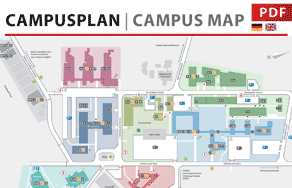G-Lab
Real-World G-Lab
| Duration: | 01.09.2009 - 31.08.2012 |
| Project Leader: | Prof. Dr.-Ing. Horst Hellbrück |
| Staff: | Dr.-Ing. Torsten Teubler |
Background
The Internet has become the backbone of our modern industrial society and the global economy in the recent years. The demands on it grew continuously. Today’s Internet has a great impact on our economy but it’s still based on mechanisms and algorithms developed in the 70's and 80's of the last century. The Internet was not designed for upcoming new applications for business or private applications. Those applications face security problems which show the shortfalls of the Internet. Of particular interest are the interaction of different networking technologies and the demands of upcoming applications. Capturing data from the real world will play a major role in the future Internet for example to collect information about distinct environmental phenomenon and also to give actual context information to the user. One of the most preferred instruments of the future Internet are wireless sensor and mesh networks which collect and provide those data.
Objective
In this project we investigated the possibility to fit wireless sensor and mesh networks in future Internet architectures. The different aspects of fundamental technical integration of communications, service infrastructure and application demands were regarded. Our goal was to develop and implement protocols supporting mobile sensor networks. Furthermore, an experimental platform (Testbed) was established, consisting of various sensor and mesh networks. This allows other research institutions and companies also develop their own algorithms for such networks and test them under realistic conditions. This sensor network testbed is integrated into the existing G-Lab (German-Lab, National Testbed for Internet algorithms) Testbed infrastructure. Real-World G-Lab is thus an extension of G-Lab.

Fig.1: Fixed testbed sensor nodes in Building 18 of Lübeck University of Applied Sciences.
Results
Stationary and Mobile Testbed

Fig.2: Fixed testbed sensor nodes in Building 18 of Lübeck University of Applied Sciences.
The mobile testbed at Lübeck University of Applied Sciences is an indoor network and will be regularly available. As a mobile platform for the testbed at Lübeck University of Applied Sciences we use modified Roomba robots. With the modifications the robots can be controlled and administered autonomously via WLAN. In addition to the mobile sensor nodes (the devices that form the sensor network) there are also fixed sensor nodes in the testbed.
Results and Future Use
The service of the testbed will be continued. Thus, for example, protocols implemented in final theses were and will be evaluated using the testbed. As an example the work "Design, implementation and evaluation of a sensor network-based system for measuring surface inclinations" ensures automatic operation with high availability while monitoring of a surface slope is necessary. The system measures the surface slopes in order to prevent stopping of an automatic operation. The system was developed with the help of TriSOS sensor nodes and the Wiselib algorithms library. With EZgate the sensor nodes were made available in the IP based network. The evaluation of the system was done in our testbed as mentioned before. The measurement system is in productive use in industry since December 2012.
The project Socor (Strategies for cooperative spectrum sensing in cognitive radio networks), also homed at the CoSA center of excellence uses the testbed for experiments and measurements of distributed systems regularly. This shows the versatility of our installation. By using the generic algorithm library Wiselib applications can be developed independent of the sensor node hardware. Since the Wiselib has been ported to the sensor network platforms of the project partners (e.g. iSense) the algorithms can be evaluated on all platforms. By using Wisebeds testbed federation feature Wisebed testbed installations can be conjoined to expand the testbed.
The mobile node testbed at Lübeck University of Applied Sciences is permanently available in the Wisebed testbed network. The mobile nodes can be made available upon request

